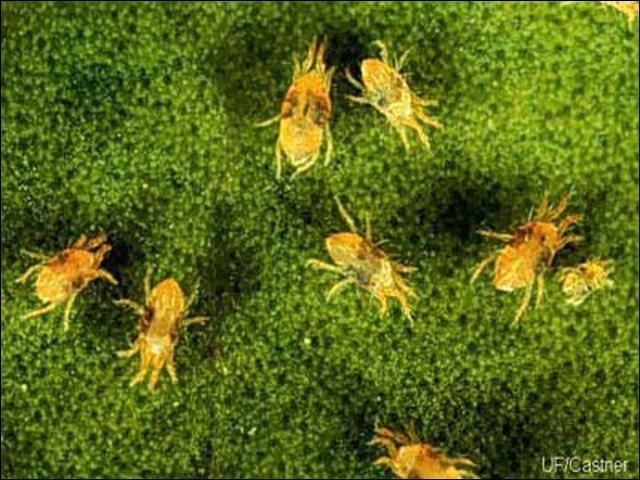By Clint Thompson
Spider mites have been observed in North Florida watermelons. While the pest is a common occurrence in dry weather, most are very isolated and require minimal action on the part of the grower.

Credit: J. Castner, University of Florida
Bob Hochmuth, University of Florida Institute of Food and Agricultural Sciences (UF/IFAS) Regional Specialized Extension agent in Live Oak, Florida, discusses what growers are likely seeing with these insects in their fields.
“They love long periods of dry weather. I think the previous month before last week when we started getting some rain, that extended period of really dry weather would be the kind of weather that spider mites really thrive in. Some years, we don’t see any spider mites at all, and in other years we do. This year happens to be one of those years where the weather was favorable for spider mites as we went through the month of April,” Hochmuth said.
Growers should maintain a good scouting program. It is common for farmers and scouts to see infestations along the edges of the fields where the mites may have moved in from weedy borders, Hochmuth said.
“It is an alert, but it’s not nearly as serious of a concern as it would be for powdery mildew, downy mildew or even gummy stem blight. If (growers) see these unusual pockets of yellowing leaves, the spider mites are on the under surface of the leaf, and with a little hand lens, you can spot them pretty quickly,” Hochmuth said. “A lot of the acreage is scouted by professional scouts, and they’re finding spider mites really early. If I was in their shoes, I’m just going to spray this one section where I see the spider mites. I don’t want to spray the whole field. That’s the strategy they can use to minimize costs and pesticide use.”









